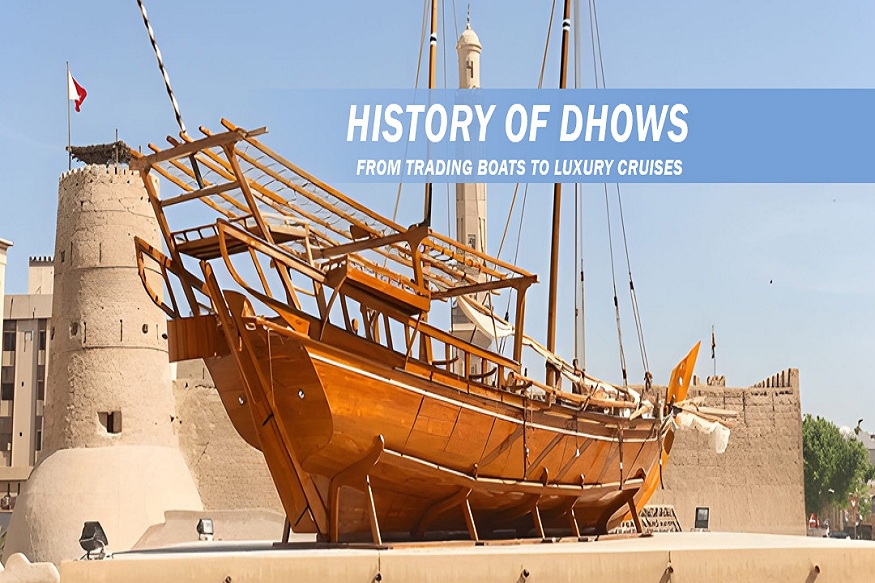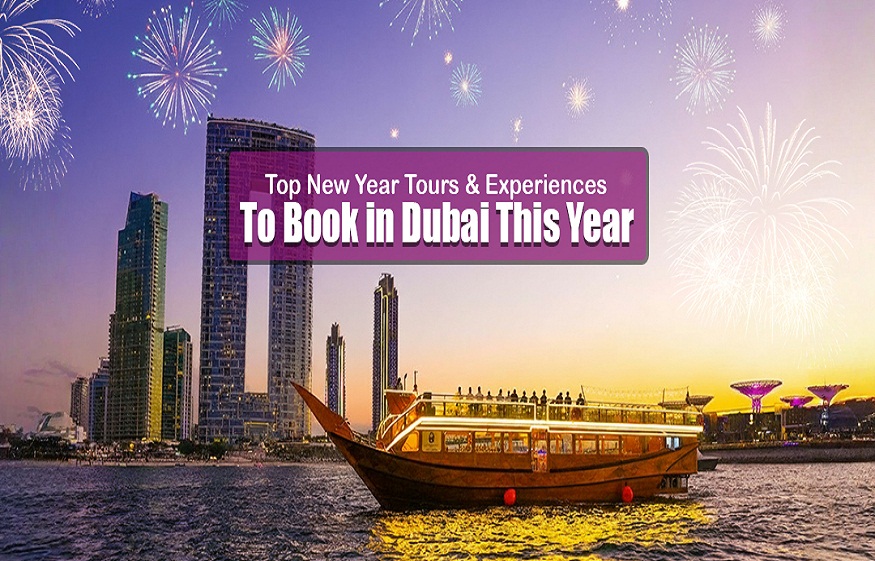Dhows are traditional elements of the Arabian maritime history. These ancient wooden boats, which were initially used for trading and fishing along the Arabian Gulf, East Africa and South Asia, have now been turned into a way of luxury and culture. A dhow cruise in contemporary Dubai is not just a seafaring adventure anymore but a special leisure experience that brings about tradition and luxury at the same time. We will see how interesting it is to trace the various histories of the dhows–as simple trading vessels to costly floating restaurants.
1. Origins of the Dhow
The history of the dhow dates back to a topic of debate, although the majority of historians trace the history of the dhow back to more than 2,000 years. Arab traders commonly used dhows to navigate the Red Sea, Arabian Gulf and the Indian Ocean. Their heavy construction of wood and triangular sails, called lateen sails,was very useful in overcoming the strong winds and deep water.
These ships proved to be critical in shipping products like spices, dates, gold, and cloths between the Arabian Peninsula, India, and East Africa. They were instrumental in making Dubai and other Gulf cities successful trade centres.
2. Dhows of the Golden Age of Trade
The dhows ruled the sea trade during the medieval period. They linked civilisations and were featured in the centre of the route of the spice trade. In contrast to the contemporary vessels, the dhows depended on the monsoon winds, which were mastered by the traders to determine their routes.
Dhows in Dubai had sustained the economy by fishing, diving for pearls, and trading long before the discovery of oil. Pearl divers would go out to sea on dhows as they risked their lives searching for natural pearls that would be exchanged in the world. This era fixed the dhow as not only a ship but also a source of sustenance to the people on the Arabian coast.
3. Evolution of the Dhow
When steamships came into the world in the 19th and 20th centuries, dhows started to lose their significance in international trade. Never, however, did they disappear. Rather, dhows transformed into boats, which were more of a cultural representation.
Towards the end of the 20th century, Dubai and other cities in the Gulf started rebuilding ancient dhows, with their traditional wooden carpentry and re-using them in leisure and tourism. These boats are no longer utilised in long-distance trade journeys, but today they are used as floating restaurants, event centres and sightseeing tours and offer the passengers a glimpse of Arabian hospitality.
4. Dhows in Modern Dubai
A dhow cruise, either through the historic Dubai Creek or the modern Dubai Marina, is one of the most popular activities that visitors like to experience in Dubai. These dhow cruise tours demonstrate the difference between the old world of Dubai and the modern world of the skyscrapers.
Guests also have a magical night onboard with buffet dinners, live shows including Tanoura dances and spectacular views of the landmarks like the Burj Khalifa, Atlantis and Marina towers. This fact is evidenced by the truth that dhows have been transformed into luxury cruise ships, which illustrates that Dubai will be able to carry tradition and modernity together.
5. The Craftsmanship of Dhows
The craftsmanship is the only element that makes dhows unique. They were traditionally constructed with no nails, with planks of teak wood joined together with ropes and wooden pegs. The construction of the dhows is still a generation-old art even today.
Dhow-building yards are still in operation in the United Arab Emirates, where these vessels are still made and repaired by their artisans. Although a few methods have been substituted with modern tools, the spirit of dhow making, that is, focusing on details and honouring the tradition, has been preserved.
6. The Reason Why Dhow Cruises Are So Popular Nowadays
It is not only sightseeing that makes dhow cruises so popular in Dubai and other Gulf cities. They offer:
- Cultural heritage—a dhow cruise gives a visitor a chance to observe the seafaring tradition of Arabs up close.
- Luxury meals—International buffets, music, and entertainment make it a boat ride to remember.
- Vistas—Be it the historic charm of Dubai Creek or the glitter of the skyscrapers of the Dubai Marina, dhows offer unparalleled views of this city.
- Romantic scenery—A dhow cruise is an ideal date night out for couples with calm waters, clear skies, and background music.
This mixture of culture, comfort, and luxury makes dhow cruises one of the most popular activities in the tourism industry in Dubai.
7. Dhow as a Symbol of Dubai
Dhows are no longer just boats; they are a cultural symbol that reminds Dubai of its origin and serves to promote the city as a luxurious destination worldwide. Today, visitors have options to choose from the Dhow Cruise Marina and dhow cruise creek. They are taking treasures across oceans as they used to do long ago, only that they are taking guests on memorable trips.
To the tourists, a dhow cruise is not a dinner or sightseeing tour; it is an opportunity to travel back in time, to sail in the same waters that were used by the Arab traders centuries ago.
Conclusion
The dhow has been transporting its cargo along the route for centuries,from the early trading ships to the modern luxury cruises. It narrates the history of Dubai, a small fishing village and a world metropolis. A dhow cruise in Dubai is a luscious experience that is both historical, traditional, and modern, and it is one of the activities that should not be overlooked by tourists.
So, when you next visit Dubai, be sure to get on a dhow and have a taste of Arabian history–where the past and the present meet at the gleaming waters of the Gulf!




